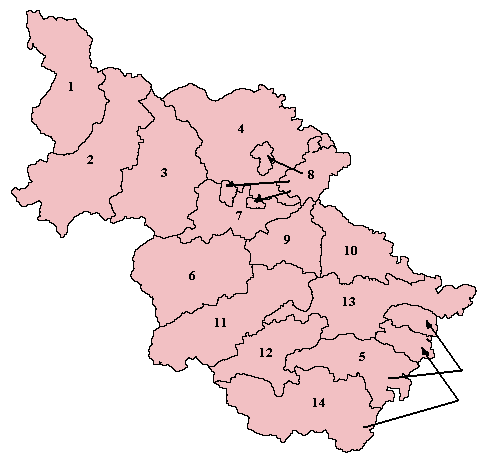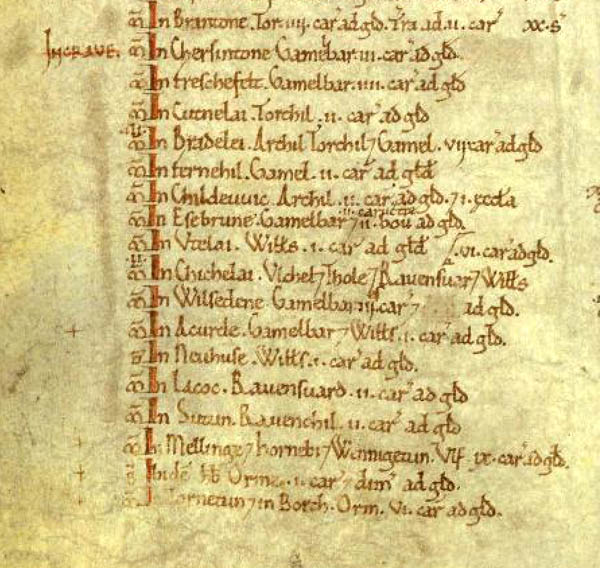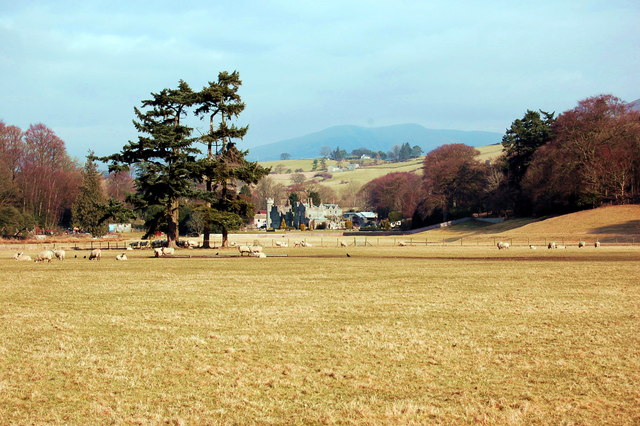|
Ewcross
The historical area of Ewecross or Ewcross is a district in the West Riding of Yorkshire, England. It included the parishes of Bentham, Clapham, Horton in Ribblesdale and Sedbergh and parts of Thornton in Lonsdale. Ewcross was split from the Staincliffe and Ewcross wapentake in the nineteenth century. In modern times the name has been used for one of the area deaneries under the Archdeacon of Richmond and Craven in the Anglican Diocese of Leeds. In 2017 it amalgamated with Bowland to become the Deanery of Bowland and Ewecross. Since 1974 the area of the wapentake has been divided between the counties of North Yorkshire and Cumbria Cumbria ( ) is a ceremonial and non-metropolitan county in North West England, bordering Scotland. The county and Cumbria County Council, its local government, came into existence in 1974 after the passage of the Local Government Act 1972. Cumb .... References Wapentakes of the West Riding of Yorkshire Ancient subdivisions of Yorkshire ... [...More Info...] [...Related Items...] OR: [Wikipedia] [Google] [Baidu] |
West Riding
The West Riding of Yorkshire is one of three historic subdivisions of Yorkshire, England. From 1889 to 1974 the administrative county County of York, West Riding (the area under the control of West Riding County Council), abbreviated County of York (WR), was based closely on the historic boundaries. The lieutenancy at that time included the City of York and as such was named West Riding of the County of York and the County of the City of York. Its boundaries roughly correspond to the present ceremonial counties of West Yorkshire, South Yorkshire and the Craven, Harrogate and Selby districts of North Yorkshire, along with smaller parts in Lancashire (for example, the parishes of Barnoldswick, Bracewell, Brogden and Salterforth became part of the Pendle district of Lancashire and the parishes of Great Mitton, Newsholme, Lancashire, Newsholme and Bowland Forest Low became part of the Ribble Valley district also in Lancashire), Cumbria, Greater Manchester and, since 1996, the u ... [...More Info...] [...Related Items...] OR: [Wikipedia] [Google] [Baidu] |
Horton In Ribblesdale
Horton in Ribblesdale is a small village and civil parish in the Craven district of North Yorkshire, England. It is situated in Ribblesdale on the Settle–Carlisle Railway to the west of Pen-y-ghent. Its population in the 2001 census was 498 people in 211 households; decreasing to 428 at the 2011 Census. History It is first attested as ''Horton'' in the Domesday Book of 1086, with ''in Ribblesdale'' being added already in the 13th century to distinguish it from Horton, Lancashire. The place-name ''Horton'' is a common one in England. It derives from Old English ''horu'' 'dirt' and ''tūn'' 'settlement, farm, estate', presumably meaning 'farm on muddy soil'. Horton in Ribblesdale was historically a part of Ewcross wapentake in the West Riding of Yorkshire. It became a parish town in the early 12th century when the church of St. Oswald was established. This church was historically associated with the Deanery of Chester, and was part of the Diocese of York&nb ... [...More Info...] [...Related Items...] OR: [Wikipedia] [Google] [Baidu] |
Wapentakes Of The West Riding Of Yorkshire
A hundred is an administrative division that is geographically part of a larger region. It was formerly used in England, Wales, some parts of the United States, Denmark, Southern Schleswig, Sweden, Finland, Norway, the Bishopric of Ösel–Wiek, Curonia, the Ukrainian state of the Cossack Hetmanate and in Cumberland County, New South Wales, Cumberland County in the British Colony of New South Wales. It is still used in other places, including in Australia (in South Australia and the Northern Territory). Other terms for the hundred in English and other languages include ''#wapentake, wapentake'', ''herred'' (Danish and Bokmål, Bokmål Norwegian), ''herad'' (Nynorsk, Nynorsk Norwegian), ''hérað'' (Icelandic), ''härad'' or ''hundare'' (Swedish), ''Harde'' (German), ''hiird'' (North Frisian language, North Frisian), ''satakunta'' or ''kihlakunta'' (Finnish), ''kihelkond'' (Estonian), ''kiligunda'' (Livonian), ''cantref'' (Welsh) and ''sotnia'' (Slavic). In Ireland, a similar subdi ... [...More Info...] [...Related Items...] OR: [Wikipedia] [Google] [Baidu] |
Rural Dean
In the Roman Catholic Church and the Anglican Communion as well as some Lutheran denominations, a rural dean is a member of clergy who presides over a "rural deanery" (often referred to as a deanery); "ruridecanal" is the corresponding adjective. In some Church of England dioceses rural deans have been formally renamed as area deans. Origins The title "dean" (Latin ''decanus'') may derive from the custom of dividing a hundred into ten tithings, not least as rural deaneries originally corresponded with wapentakes, hundreds, commotes or cantrefi in Wales. Many rural deaneries retain these ancient names.Cross, F. L., ed. (1957) ''The Oxford Dictionary of the Christian Church''. London: Oxford University Press; p. 1188. The first mention of rural deans comes from a law made by Edward the Confessor, which refers to the rural dean being appointed by the bishop "to have the inspection of clergy and people from within the district to which he was incumbent... to which end ehad power to ... [...More Info...] [...Related Items...] OR: [Wikipedia] [Google] [Baidu] |
North Yorkshire
North Yorkshire is the largest ceremonial counties of England, ceremonial county (lieutenancy area) in England, covering an area of . Around 40% of the county is covered by National parks of the United Kingdom, national parks, including most of the Yorkshire Dales and the North York Moors. It is one of four counties in England to hold the name Yorkshire; the three other counties are the East Riding of Yorkshire, South Yorkshire and West Yorkshire. North Yorkshire may also refer to a non-metropolitan county, which covers most of the ceremonial county's area () and population (a mid-2016 estimate by the Office for National Statistics, ONS of 602,300), and is administered by North Yorkshire County Council. The non-metropolitan county does not include four areas of the ceremonial county: the City of York, Middlesbrough, Redcar and Cleveland and the southern part of the Borough of Stockton-on-Tees, which are all administered by Unitary authorities of England, unitary authorities. ... [...More Info...] [...Related Items...] OR: [Wikipedia] [Google] [Baidu] |
Non-metropolitan Counties Of England
A non-metropolitan county, or colloquially, shire county, is a county-level entity in England that is not a metropolitan county. The counties typically have populations of 300,000 to 1.8 million. The term ''shire county'' is, however, an unofficial usage. Many of the non-metropolitan counties bear historic names and most, such as Wiltshire and Staffordshire, end in the suffix "- shire". Of the remainder, some counties had the "-shire" ending but have lost it over time, such as Devon and Somerset. Origins Prior to 1974 local government had been divided between single-tier county boroughs (the largest towns and cities) and two-tier administrative counties which were subdivided into municipal boroughs and urban and rural districts. The Local Government Act 1972, which came into effect on 1 April 1974, divided England outside Greater London and the six largest conurbations into thirty-nine non-metropolitan counties. Each county was divided into anywhere between two and fourtee ... [...More Info...] [...Related Items...] OR: [Wikipedia] [Google] [Baidu] |
Anglican Diocese Of Leeds
The Anglican Diocese of LeedsDiocese of Leeds — Diocese to be known only as Diocese of Leeds (Accessed 15 July 2016). (previously also known as the Diocese of West Yorkshire and the Dales) is a (administrative division) of the , in the . It is the largest diocese in England by area, comprising much of western |
Anglican
Anglicanism is a Western Christian tradition that has developed from the practices, liturgy, and identity of the Church of England following the English Reformation, in the context of the Protestant Reformation in Europe. It is one of the largest branches of Christianity, with around 110 million adherents worldwide . Adherents of Anglicanism are called ''Anglicans''; they are also called ''Episcopalians'' in some countries. The majority of Anglicans are members of national or regional ecclesiastical provinces of the international Anglican Communion, which forms the third-largest Christian communion in the world, after the Roman Catholic Church and the Eastern Orthodox Church. These provinces are in full communion with the See of Canterbury and thus with the Archbishop of Canterbury, whom the communion refers to as its '' primus inter pares'' (Latin, 'first among equals'). The Archbishop calls the decennial Lambeth Conference, chairs the meeting of primates, and is the ... [...More Info...] [...Related Items...] OR: [Wikipedia] [Google] [Baidu] |
Archdeacon Of Richmond And Craven
The Archdeacon of Richmond and Craven is an archdiaconal post in the Church of England. It was created in about 1088 within the See of York and was moved in 1541 to the See of Chester, in 1836 to the See of Ripon and after 2014 to the See of Leeds, in which jurisdiction it remains today. It is divided into seven rural deaneries: Ewecross, Harrogate, Richmond, Ripon, Skipton, and Wensley, all in Yorkshire and Bowland in Lancashire. History The Archdeaconry of Richmond was created in about 1088 and was endowed by Thomas, Archbishop of York.Richmondshire Churches – Introduction: The Archdeaconry of Richmond (Accessed 4 August 2014) Originally it comprised the western parts of Yorkshire and Lancashire, as well as the greater portion of the counties ... [...More Info...] [...Related Items...] OR: [Wikipedia] [Google] [Baidu] |
Thornton In Lonsdale
Thornton in Lonsdale is a village and civil parish in the Craven District and ceremonial county of North Yorkshire in England. It is very close to the border with Cumbria and Lancashire and is north of Ingleton and south-east of Kirkby Lonsdale, and has a population of 308, falling to 288 at the 2011 Census. Its main claims to fame are the Marton Arms pub and St Oswald's Church, Sir Arthur Conan Doyle married his first wife at this church in 1885 and held his reception at The Marton Arms before setting off to Ireland on honeymoon. Doyle's mother resided at nearby Masongill from 1882 to 1917. History In 1086 the ''Domesday Book'' listed on folio 301v under Craven ''Torntun & in Borch, Orm vi curactes ad geld.'' – that is in ''Thornton in Lonsdale with Burrow-with-Burrow Orm has circa 720 acres of plough-land to be taxed''. This manor belonged to Orm, one of the family of Norse Noblemen who held the most land in Northern England. All estates would also include g ... [...More Info...] [...Related Items...] OR: [Wikipedia] [Google] [Baidu] |
Staincliffe (wapentake)
Staincliffe, also known as Staincliff, was a wapentake of the West Riding of Yorkshire. The wapentake was named from a place called Staincliffe, now lost, in Bank Newton, not to be confused with Staincliffe near Dewsbury. Staincliffe was presumably where the wapentake originally met, although in the 12th century it met at Flasby. The wapentake was split into two divisions. The East Division included the ancient parishes of Barnoldswick, Bracewell, Broughton, Burnsall, Carleton, Gargrave, Hebden, Keighley, Kettlewell, Kildwick, Linton, Marton in Craven, Skipton, Thornton in Craven and parts of Arncliffe and Addingham. The West Division included the parishes of Bolton by Bowland, Giggleswick, Gisburn, Kirkby Malhamdale, Long Preston, Slaidburn and parts of Arncliffe, Browsholme, Mitton, and Sawley. Some parts of the Forest of Bowland attached to the Chapelry of Whitewell, were part of the Lancashire parish of Whalley in neighbouring Blackburnshire Blackbur ... [...More Info...] [...Related Items...] OR: [Wikipedia] [Google] [Baidu] |
Sedbergh
Sedbergh ( or ) is a town and civil parish in Cumbria, England. The 2001 census gave the parish a population of 2,705, increasing at the 2011 census to 2,765. Historically in the West Riding of Yorkshire, it lies about east of Kendal, north of Lancaster and about north of Kirkby Lonsdale, just within the Yorkshire Dales National Park. It stands at the foot of Howgill Fells, on the north bank of the River Rawthey, which joins the River Lune below the town. Situation Sedbergh has a narrow main street lined with shops. From all angles, the hills rising behind the houses can be seen. Until the coming of the Ingleton Branch Line in 1861, these remote places were reachable only by walking over some steep hills. The line to Sedbergh railway station ran from 1861 to 1954. The civil parish covers a large area, including the hamlets of Millthrop, Catholes, Marthwaite, Brigflatts, High Oaks, Howgill, Lowgill and Cautley, the southern part of the Howgill Fells and the western p ... [...More Info...] [...Related Items...] OR: [Wikipedia] [Google] [Baidu] |

.jpg)


.jpg)

